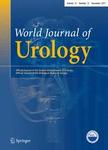版权所有:内蒙古大学图书馆 技术提供:维普资讯• 智图
内蒙古自治区呼和浩特市赛罕区大学西街235号 邮编: 010021

作者机构:Hist Committee EAU Dept Urol B-8500 Kortrijk Belgium
出 版 物:《WORLD JOURNAL OF UROLOGY》 (世界泌尿学杂志)
年 卷 期:1999年第17卷第3期
页 面:145-150页
核心收录:
学科分类:1002[医学-临床医学] 100210[医学-外科学(含:普外、骨外、泌尿外、胸心外、神外、整形、烧伤、野战外)] 10[医学]
主 题:欧洲 标本制备/历史 标本制备/仪器和设备 卫生用具和设备/历史 历史 15世纪 历史 16世纪 历史 17世纪 历史 18世纪 历史 19世纪 历史 古代 历史 中世纪 人类
摘 要:In the history of mankind the first receptacles for urine were made and employed for diagnostic purposes and developed over centuries to a sophisticated matula. In ancient Greek and Roman history, chamber pots existed and urine was collected to bleach sheets, but it was only in the late medieval and renaissance times that a real urine receptacle or urinal for daily use was developed. We give a short description of the materials used, including clay, pewter, copper, and silver, but more sophisticated receptacles made of china, such as the bourdaloue, and of glass, such as the Kuttrolf, were also developed for use during long church ceremonies. Less known are the wooden pipes from Turkestan, used to keep babies dry. In the long history of mankind. urinals sometimes became very original objects.